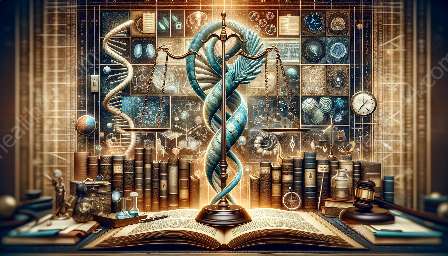Medical device regulations are a vital component of the healthcare industry, ensuring the safety and efficacy of devices used in patient care. This comprehensive guide offers detailed insights into the legal framework and resources surrounding medical devices, exploring the intersection of medical law and literature.
The Legal Framework for Medical Device Regulations
Medical device regulations are governed by a complex legal framework designed to protect public health and safety. In many countries, including the United States and the European Union, regulatory agencies such as the Food and Drug Administration (FDA) and the European Medicines Agency (EMA) oversee the approval and monitoring of medical devices.
These regulatory agencies establish rigorous standards for the design, manufacturing, and marketing of medical devices, aiming to ensure their safety and effectiveness. Compliance with these standards is essential for manufacturers seeking approval to market their devices and for healthcare professionals responsible for their use.
Key Elements of Medical Device Regulations
Medical device regulations encompass several key elements, including classification, premarket approval, labeling, and post-market surveillance. Understanding these elements is essential for navigating the regulatory landscape and ensuring legal compliance.
- Classification: Medical devices are categorized into different classes based on their level of risk, with higher-risk devices subject to more stringent regulations. The classification process determines the necessary level of regulatory scrutiny and the applicable conformity assessment procedures.
- Premarket Approval: Before a medical device can be marketed, manufacturers must obtain approval from regulatory agencies, demonstrating the device's safety and effectiveness through clinical data and rigorous testing. This process varies depending on the device's classification and intended use.
- Labeling: Accurate and comprehensive labeling is crucial for medical devices, providing healthcare professionals and patients with essential information about the device's indications, contraindications, and potential risks. Labeling requirements are integral to medical device regulations and serve as a key component of compliance.
- Post-Market Surveillance: Once a medical device is on the market, ongoing surveillance is critical for monitoring its performance, identifying potential issues, and ensuring continued safety and effectiveness. Regulatory agencies require manufacturers to implement post-market surveillance programs to promptly address any emerging concerns.
Intersection with Medical Law
The regulation of medical devices intersects with various aspects of medical law, shaping the legal landscape for device manufacturers, healthcare providers, and patients. Legal considerations encompass intellectual property rights, liability, and ethical implications, among other factors.
Intellectual Property Rights:
The development and commercialization of medical devices involve complex intellectual property considerations, including patents, trademarks, and trade secrets. Manufacturers must navigate the intersection of medical device regulations and intellectual property laws to protect their innovations while complying with regulatory requirements.
Liability and Patient Safety:
Medical device regulations influence liability and patient safety, establishing standards for accountability in cases of device-related harm. Legal provisions address issues such as product liability, negligence, and failure to warn, shaping the responsibilities of manufacturers, healthcare providers, and patients in the context of device usage.
Ethical Implications:
The ethical dimensions of medical device regulations encompass a broad range of considerations, including access to innovative technologies, informed consent, and equitable distribution of healthcare resources. Compliance with ethical principles is integral to navigating the legal and regulatory complexities associated with medical devices.
Resources for Understanding Medical Device Regulations
Accessing reliable and authoritative resources is essential for gaining a comprehensive understanding of medical device regulations and their intersection with medical law. The following key resources offer valuable insights and guidance for stakeholders involved in the medical device ecosystem:
- Regulatory Agencies: Websites and guidance documents published by regulatory agencies such as the FDA, EMA, and other national authorities provide detailed information on regulatory requirements, guidance for submissions, and updates on the evolving regulatory landscape.
- Legal Publications: Legal literature, including academic journals, books, and legal databases, offers in-depth analysis of medical device regulations from a legal perspective, exploring case law, regulatory developments, and scholarly commentary on relevant legal issues.
- Professional Organizations: Industry associations, professional societies, and advocacy groups represent valuable sources of information and networking opportunities for stakeholders involved in medical device regulation and compliance.
- Training and Education: Workshops, webinars, and training programs focused on medical device regulations provide professionals with practical knowledge and insights to navigate the regulatory environment while staying abreast of legal requirements.
By engaging with these resources, stakeholders can enhance their understanding of medical device regulations while staying informed about the legal and compliance aspects inherent to the medical device industry.



